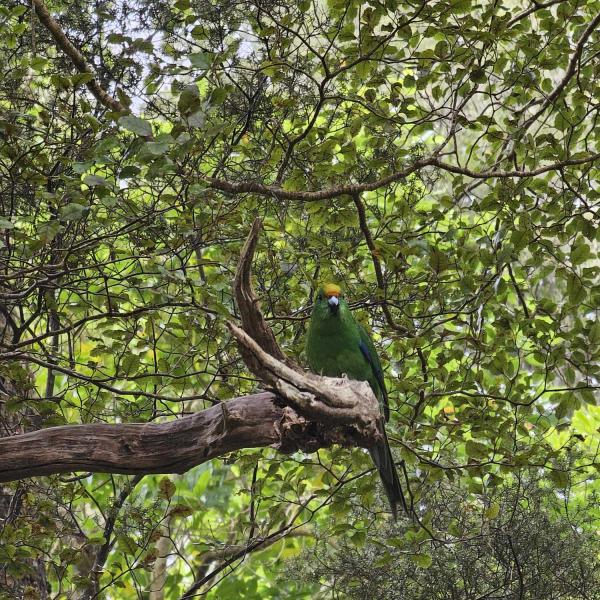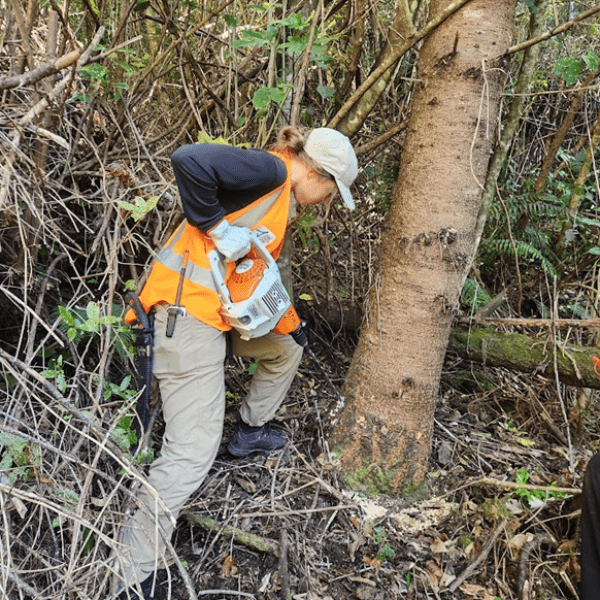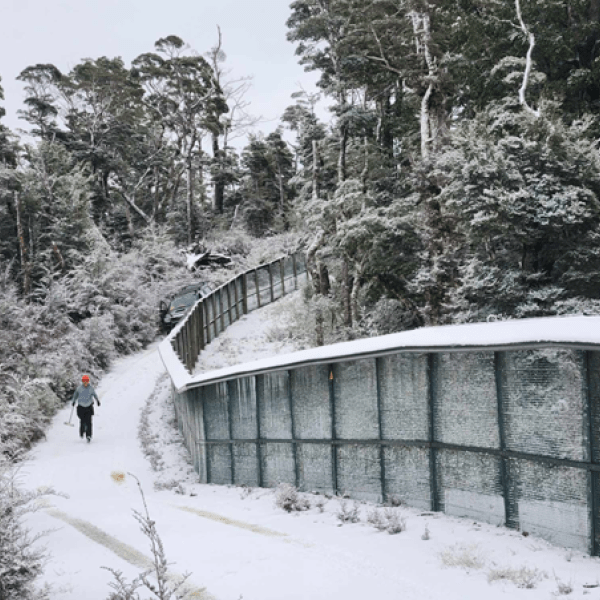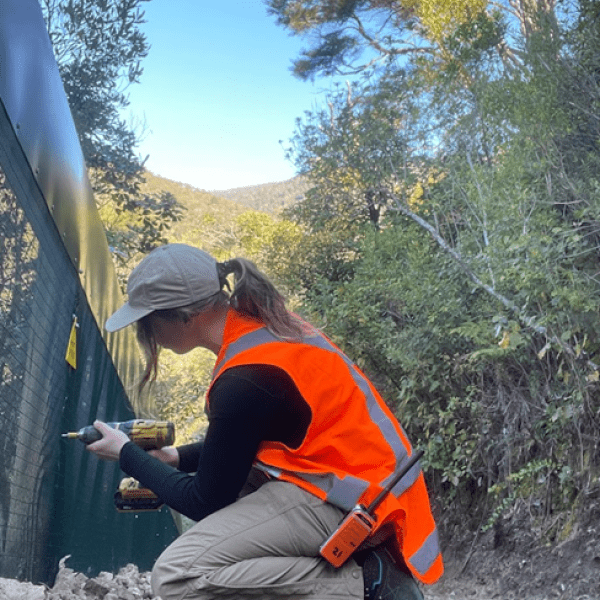Global Studies student Georgia Mason-Guertin shares her story
I arrived in Nelson, New Zealand at the end of June, eager and excited for my internship to begin at the Brook Waimarama Ecosanctuary. For the first time, I was combining my passions for community development and the Earth. When I was searching for internship placements, stumbling upon “the Brook” was a complete accident. I now know I couldn’t have picked a better placement for what I was hoping to both give and get out of this internship.
About the Brook
To understand what the Brook is all about, you first need to understand a bit about the ecology of New Zealand.
New Zealand separated from the rest of the supercontinent roughly 80 million years ago and all its flora and fauna have been evolving ever since. Mammals never naturally came into existence. When humans finally arrived roughly a thousand years ago, we brought with us all sorts of plant and animal species that have wreaked absolute havoc on the ecosystems of New Zealand, driving many species to or near to extinction.
That is where the Brook comes in. The Brook is 700 hectares of native, old-growth forest and is a haven for threatened and endangered birds. This is because the Brook is completely “pest” free and has effectively removed all introduced mammals thanks to rigorous monitoring and, most importantly, the impenetrable fence that was installed all around the perimeter of the property.
While it may all sound a little strange, all the work that is put in to keep the Brook pest-free is worth it. During my time at the Brook, I got to help with a survey of the kakariki karaka, the second most endangered bird in New Zealand that was re-introduced in the sanctuary last year. Without the threat of introduced predators, the kakariki has thrived and the Brook is now home to more than half of the bird’s wild population (and we get to see them all the time!).
My day-to-day
The majority of my days at the Brook were spent wandering around the forest helping with whatever task was needed. Most often, I was assisting our biosecurity rangers with pest monitoring or invasive plant and tree removal.
For at least the first half of the internship, every day was different. I was involved in daily fence inspection, trail maintenance, going out with school groups and visitor centre greeting. One time we even had to go up and clean all the snow off the hood of the fence because if it froze it would have been easy for pests to climb up it and over the fence.
Major projects
The first major project I was involved with at the Brook was the tuatara re-introduction project. The tuatara is a reptile whose lineage traces to the Triassic era. Remember when I said all pests had been eradicated from the Sanctuary? That was a half-truth. It was once entirely pest-free, but mice have somehow snuck back in. To get the permit to reintroduce what is essentially a living dinosaur, the tuatara, we had to build a mouse-proof fence in a small section of the sanctuary and eradicate the mice in this area so they do not pose a threat to the baby tuatara.
My other major project was the volunteer research I conducted. The Brook has more than 250 volunteers who are essential to keeping the place operational. With my social sciences education background, my boss thought it would be a good use of my skills to assign me a human research project with the goal of better understanding volunteer experiences and well-being. Through this project I got to learn so much about the massive impact the Brook has, not only on the flora and fauna it is trying to protect, but on the humans involved with it. I felt I was able to give something meaningful back to this place that had become my oasis.
Final thoughts
I am so grateful for the funding awarded to me by the Queen Elizabeth Scholarship program, as it was the only way a volunteer internship could have been possible for me. I went into this internship interested in learning how conservation intersects with community development and was deeply humbled by the masterclass I received in how giving back to the Earth can contribute so massively to community health and well-being.
Georgia Mason-Guertin is a fourth-year Global Studies student at VIU. VIU’s Queen Elizabeth Scholarship program allowed her to follow her passion for sustainable development this summer. Learn more about opportunities to study or intern abroad by visiting Education Abroad.
Related Posts
Got an article idea for the blog? Email students@viu.ca.








